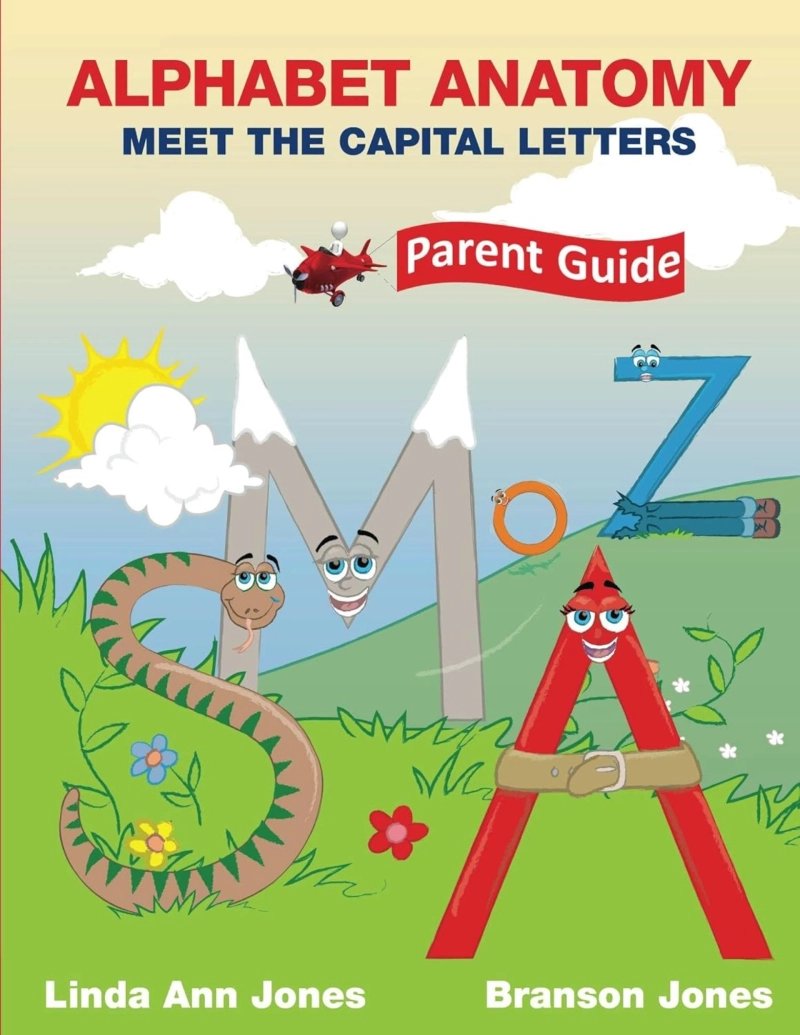Teaching young children, the alphabet is one of the first and most crucial steps in their literacy journey. Traditional alphabet books often rely on rote memorization and passive learning, which may not always capture a child's full attention or foster a deep understanding of the material. Enter Alphabet Anatomy a revolutionary approach to teaching the alphabet that goes far beyond simply presenting letters and their names. By combining engaging visuals, storytelling, and interactive elements, Alphabet Anatomy transforms the process of learning letters into a fun, dynamic, and deeply impactful experience for young learners.
A Visual-First Approach
The core of Alphabet Anatomy’s methodology lies in its visual-first approach. While traditional alphabet books often pair each letter with a simple object (e.g., "A is for apple"), Alphabet Anatomy goes a step further by integrating illustrations that not only show the letter but also provide a visual context that is more memorable and engaging. For instance, the letter “A” is not just accompanied by an image of an apple; it’s tied to a vivid and colorful representation of an apple that connects to the child’s own experiences and perceptions. This allows children to create mental associations between letters, sounds, and the world around them.
The visual element is key to making letter recognition more effective because children’s brains process visual stimuli faster than any other form of information. By linking letters to memorable images, Alphabet Anatomy ensures that children form a deeper connection to each letter. This is essential for improving both retention and recall, as research in cognitive psychology shows that visuals aid in faster learning and stronger memory retention.
Storytelling: Bringing Letters to Life
Unlike traditional alphabet books, which tend to be linear and simple, Alphabet Anatomy incorporates storytelling as a central element of its approach. Each letter is introduced through a story or narrative, allowing the letter to take on character and personality. For example, the letter “B” could be presented with a story about a bear or a bird, making the learning process more engaging and relatable. By turning each letter into a character or an element of a larger narrative, children are able to interact with the alphabet in a way that feels less like memorization and more like an adventure.
Storytelling makes the learning experience more immersive and dynamic. Children are naturally drawn to stories and narratives, and by introducing letters within the context of a story, Alphabet Anatomy captures the child's attention in a way that typical alphabet books do not. The combination of visuals and storytelling helps to cement the learning in a child’s mind, making it more likely that they will remember the letter, its sound, and its corresponding word.
Interactive Learning
Another standout feature of Alphabet Anatomy is its emphasis on interactive learning. Unlike traditional books where children passively read the material, Alphabet Anatomy encourages active participation. Children are prompted to trace the letters, color illustrations, and engage in hands-on activities that reinforce the letter they are learning about. For example, after learning about the letter “M” through a story about a monkey, children might be asked to trace the letter "M" or color an image of a monkey. This interactive approach supports kinesthetic learning, where children learn through movement and physical engagement with the material.
Interactive learning not only reinforces letter recognition but also helps develop fine motor skills and hand-eye coordination, as children physically trace the letters. By incorporating such activities into the learning process, Alphabet Anatomy turns what could be a passive experience into one that actively involves the child, making learning feel more like play.
Multi-Sensory Learning for Deeper Understanding
Alphabet Anatomy stands out from traditional alphabet books because it supports multi-sensory learning. The book integrates visual, auditory, and tactile experiences to engage all of a child’s senses. As children interact with the book, they are not only looking at the images but also hearing the sounds associated with each letter and feeling the action of tracing the letters. This multi-sensory approach has been proven to enhance memory retention, as children are more likely to remember information when it is tied to multiple senses.
Additionally, the stories and visuals help children connect the abstract concept of letters with the concrete world around them. For example, by associating the letter “P” with a playful picture of a puppy and a story about its adventures, children understand that letters are not just random symbols; they are tools used to communicate real-world concepts and ideas.
A Holistic Approach to Early Literacy
Overall, Alphabet Anatomy provides a holistic approach to early literacy that combines cognitive science, creativity, and interactive play. While traditional alphabet books may focus solely on rote memorization, Alphabet Anatomy fosters a deeper understanding of the alphabet by encouraging children to engage with letters on multiple levels. From recognizing letters and sounds to developing fine motor skills and building a love of reading, Alphabet Anatomy prepares young learners for success in school and beyond.
In conclusion, Alphabet Anatomy stands out as a revolutionary tool in early childhood education. Its use of visuals, storytelling, and interactive learning creates an engaging, comprehensive, and enjoyable experience for children. By making letters come to life, Alphabet Anatomy not only teaches children the alphabet but also sets them on the path to becoming confident, excited readers and learners.


